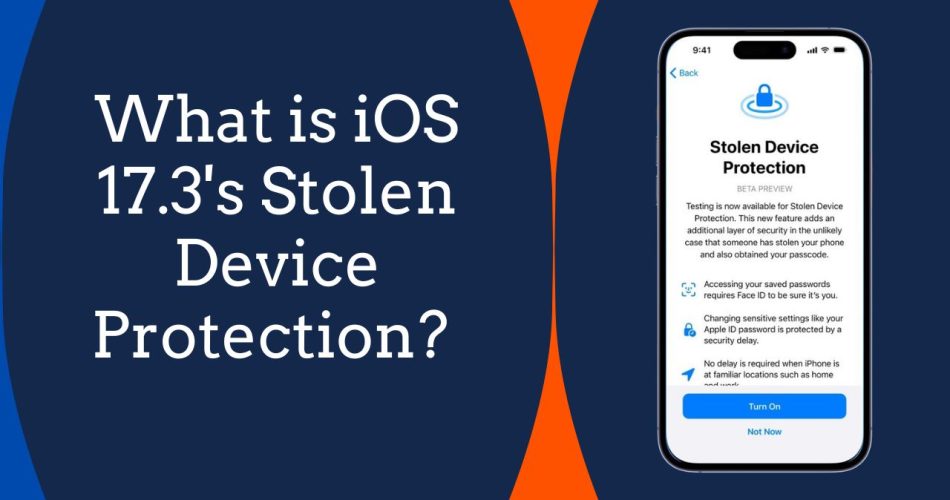Apple’s latest iOS 17.3 update introduces an important new security capability called Stolen Device Protection. This feature is designed to help protect your iPhone and the sensitive personal data it contains in the event it is ever lost or stolen.
What is Stolen Device Protection?
Stolen Device Protection is an iOS security feature that adds extra authentication requirements and security delays when your iPhone is away from familiar locations like home or workplace. It is intended to prevent unauthorized access if your device ends up in the wrong hands.
When enabled, Stolen Device Protection will do things like require Face ID or Touch ID authentication to access passwords or credit cards stored on your iPhone. It can also delay the ability for someone else to turn off critical security settings like Find My iPhone.
Why is Stolen Device Protection Important?
iPhones today contain a wealth of private information about us. This includes personal photos and videos, financial information, contacts, emails, and browsing history. If a thief gained access to your unlocked iPhone, they could access all of this information.
Stolen Device Protection makes an iPhone much less desirable for thieves by locking down access to personal data when the phone is away from familiar locations. It provides peace of mind that your information will remain protected if your device is lost or stolen.
Requirements to Enable On Stolen Device Protection
Because Stolen Device Protection adds additional security, you must meet certain requirements for it to work properly:
Two-factor authentication enabled for your Apple ID
- A passcode set for your iPhone
- Face ID or Touch ID enabled
- Find My iPhone turned on
- Location services/Significant Locations enabled
Meeting these requirements allows Stolen Device Protection to function securely and minimize unauthorized access attempts.
How to Enable Stolen Device Protection
Enabling Stolen Device Protection is easy once you meet the requirements above. Just follow these steps:
- Open the Settings app and tap Face ID & Passcode (or Touch ID & Passcode on older models).
- Enter your passcode when prompted.
- Scroll down and tap Turn On under the Stolen Device Protection header.
- Read the information about how the feature works.
- Tap Turn On to confirm enabling Stolen Device Protection.
That’s all there is to it! You’ll see a confirmation that Stolen Device Protection is now turned on.
How To Use iPhone with Stolen Device Protection
When Stolen Device Protection is enabled, you’ll notice extra security steps required in certain situations where your location isn’t recognized.
For example, you may need to authenticated with Face ID or your passcode when accessing passwords or credit cards stored in your iPhone. These extra steps help protect your sensitive information.
You’ll also experience a security delay when trying to turn off Stolen Device Protection outside familiar locations. This is an important safeguard against thieves trying to disable tracking or wipe the iPhone.
Conclusion
Stolen Device Protection offers iPhone users valuable security enhancements to help keep data safe in case an iPhone is lost or stolen. By adding authentication hurdles and security delays, it makes the iPhone far less desirable for thieves. Just make sure to turn off the feature before selling or trading in your iPhone.

